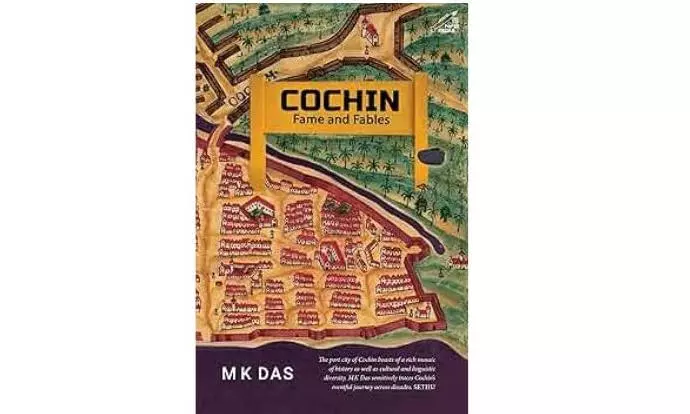Book Review | How multinational was port of Kochi!

Journalist M.K. Das has authored this unique volume of essays tracking the evolution of Kerala's financial capital which is also an emerging mega-city. Now renowned internationally albeit since 2012 for its biennale, Kochi, formerly named Cochin, is a young city.
Young, eventhough Kerala Mahathmyam, the ancient book of legends, traces the lineage of the Cochin royalty to the Ayodhya Suryavamshis, stating that Parashurama crowned the grandson of Lava from Ramayana as king of Balapuri. In all probability, Kochi was under water and later came into existence only as a small harbour that became prominent after a tsunami in 1341 wiped out the principal port, Muziris. It was, however, frequented by Arabs, Yavanas (Greek and Romans), Syrians and Jews, along with the rest of the Malabar coast. They were followed by the Portuguese, Dutch and British.
Here, missing inconspicuously is citation for the event of the tsunami because it is widely believed that Muziris was actually flooded by the river Periyar when excess siltation caused it to change course after overflowing its banks.
Researchers investigating the history of Jewish settlement in Kerala say that the name Cochin derives from “Kochas”, the name given by Jews to those who mass-migrated to it from their earlier settlement at Muziris/Kodungallur in the tsunami’s aftermath. The area gifted by the Cochin Maharaja to the Jews across the backwaters to construct a synagogue came to be called Mattancherry, as “Mattan” in Hebrew meant “gift” and “cherry” meant “settlement”.
The first-ever mention of Cochin is in the writings of Ma Huan, interpreter and chronicler of Chinese sea adventurer Cheng Ho. Cheng lived during the rule of the Ming dynasty, making seven voyages to the Malabar coast and up to Africa between 1405-07 and 1431-33 CE. According to Ma, “the king has simply a square piece of silk wound round his loins, kept in place by a coloured waistband of the same material, and on his head a turban of yellow or white cotton cloth… The houses are built of the wood of the coconut tree”.
Yet for Italian merchant and explorer, Niccolo de’ Conti (1440), Cochin was a happening city, “a place to spend your money”.
In their struggles with the powerful Calicut/Kozhikode Zamorins, Das talks about betrayals faced by the Perumpadappu Swaroopam who had been ruling the precursor state of Cochin since the fall of the Cheras in the 12th century and the occasional blow they were able to deliver to them even if they fled their kingdom.
This book is valuable for providing blow-by-blow accounts of the growth of Kochi’s industry and infrastructure, starting from the building of the port by British engineer Sir Robert Bristow and the laying of the Ernakulam-Shornur railway line right up to the modern era, not omitting even notable workers’ strikes. It also consolidates information about its powerful line of Dewans.
But its most striking element is the story of Sakthan Thampuran aka Sri Rama Varma (1790-1805), the visionary maharaja-rajarsi who inherited a “broken” Kochi, died early at 54 but, with his series of radical reforms in education, health, industry and agriculture, forever transformed the state.
Cochin: Fame and Fables
By M.K. Das
Niyogi
pp. 300; Rs 795
